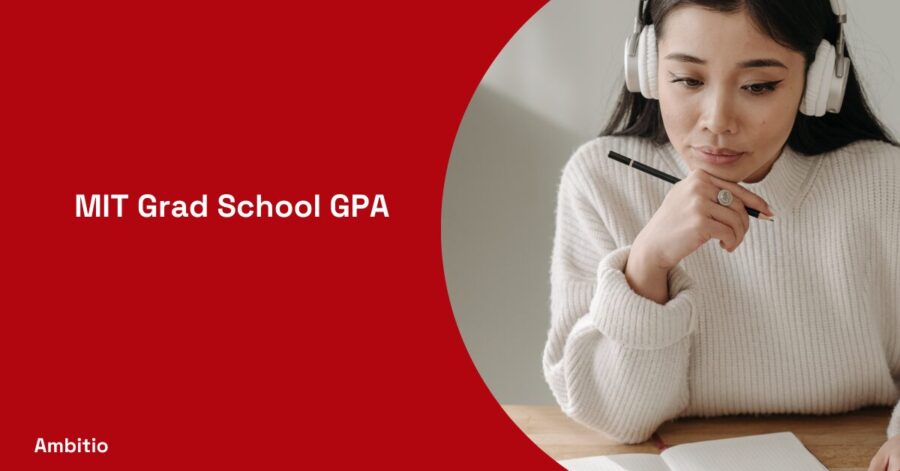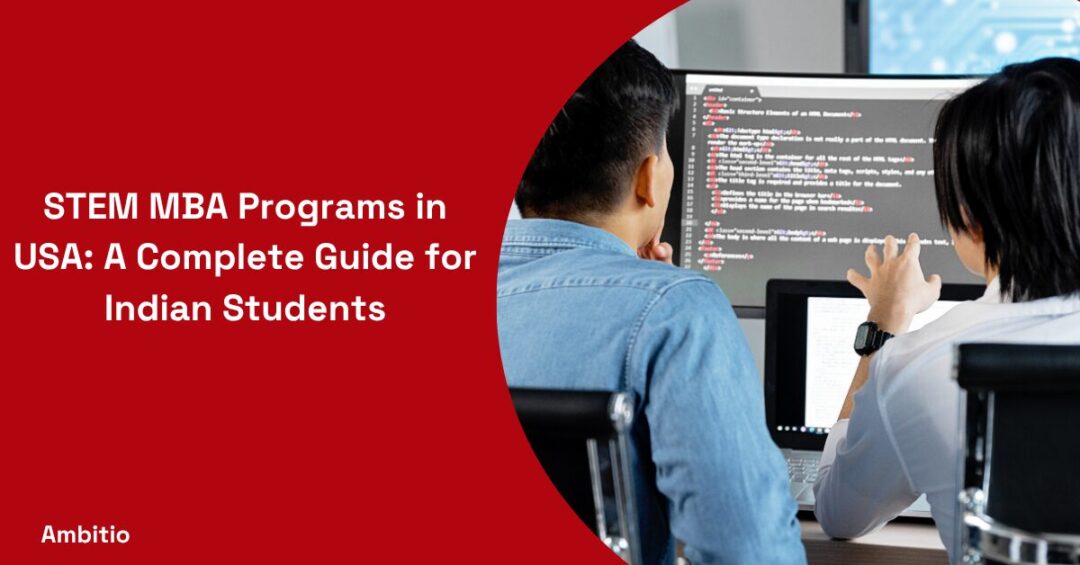11 December 2024
7 minutes read
MIT Grad School GPA: Navigating Through the Admission Standards and Requirements

Introduction
The Massachusetts Institute of Technology (MIT) stands as a beacon of excellence in higher education, particularly in the realm of graduate studies.
For many aspiring graduate students, gaining admission to MIT is a dream, but it often comes with questions about academic standards, particularly the GPA requirements.
This comprehensive guide delves into the intricacies of MIT’s graduate admissions, shedding light on the GPA expectations and other critical factors influencing acceptance.
Decoding the Role of GPA in MIT’s Graduate Admissions
Unveiling the GPA Expectations for MIT Grad School
At MIT, the graduate programs are known for their stringent academic standards. While there is no explicitly stated minimum GPA requirement, the competitive nature of the admissions process typically sees students with higher GPAs, often above 3.5 on a 4.0 scale, being favored.
This benchmark, however, can vary across different departments and programs. For example, fields like computer science and engineering might demand higher GPAs due to the intense competition and rigorous curriculum.
Understanding the average GPA of admitted students can provide a benchmark for applicants. While this number is not a definitive cutoff, it does offer insight into the competitiveness of the application pool.
It’s essential to research the specific requirements of the department you are applying to, as each department within MIT has its unique criteria and expectations.
The Impact of Undergraduate Institutions on Grad School Admission
The reputation of your undergraduate institution can play a role in how your GPA is perceived. Graduates from highly reputed colleges or universities might find that their GPA carries different weight compared to those from less well-known institutions.
This is because MIT’s admissions committee recognizes the varying levels of grading rigor across different colleges.
Strategies to Offset a Lower GPA
- Highlight Research Experience: Emphasize any research projects or experiences, particularly those that resulted in publications or presentations. This demonstrates your practical skills and commitment to your field.
- Strong Letters of Recommendation: Secure recommendations from professors or professionals who know your work well and can vouch for your abilities, work ethic, and potential.
- Outstanding Test Scores: If required, aim for high scores in standardized tests like the GRE to showcase your academic strengths.
- Relevant Work Experience: Include any professional experiences related to your field of study. This shows your practical application of knowledge and skills.
- Compelling Statement of Purpose: Write a strong and clear SOP that not only explains your academic journey but also your future goals and how the program aligns with them.
- Explain GPA Contextually: If there were specific reasons for a lower GPA (like a challenging personal situation), explain this in your application (often in the SOP or an additional essay) to provide context.
- Extra Courses or Certifications: Take additional relevant courses or certifications to show your ongoing commitment to learning and improving in your field.
- Show Improvement Over Time: If your GPA improved over the course of your studies, highlight this to show your growth and ability to overcome challenges.
- Extracurricular Activities: Include extracurricular activities, especially those demonstrating leadership, innovation, or other skills relevant to your field of study.
- Volunteer Work and Community Engagement: Demonstrate your involvement in community projects or volunteer work, particularly if it’s relevant to your area of study.
- Internships and Practical Experience: Showcase any internships or practical experiences that have given you hands-on experience in your field.
- Quantifiable Achievements: Include any awards, honors, or other achievements that can objectively demonstrate your abilities and potential.
- Networking: Engage with faculty or alumni from the program to gain insights and possibly advocates for your application.
- Strong Interview Performance: If the program requires an interview, prepare thoroughly to make a strong impression and demonstrate your passion and suitability for the program.
Remember, a holistic approach is often taken in graduate admissions, so showcasing your strengths in these areas can significantly balance a lower GPA.
Comparative Analysis: MIT vs. Other Leading Institutions
| Criteria | MIT (Massachusetts Institute of Technology) | Other Leading Institutions (e.g., Caltech, Stanford) |
|---|---|---|
| GPA Expectations | High (often above 3.5) | High (similar range, but may vary by program) |
| Program Focus | Strong emphasis on practical application, innovation, and research | Varies; some may emphasize theoretical knowledge more (e.g., Caltech), while others may focus on entrepreneurship and leadership (e.g., Stanford) |
| Admission Requirements | GRE (varies by program), high undergraduate GPA, strong letters of recommendation, compelling SOP, research experience | Similar requirements; GRE scores often required, high GPA, strong letters of recommendation, personal statements, and relevant experience or research |
| Research Emphasis | Very high; significant value placed on practical research experience and potential for innovation | High; emphasis on research varies, with some institutions placing more focus on theoretical knowledge or professional experience |
| Diversity and Inclusivity | Strong commitment to creating a diverse and inclusive student body; considers a wide range of backgrounds and experiences | Similar commitments to diversity; approaches to inclusivity and diversity may vary in focus and implementation |
| Extracurricular Activities | Valued, especially if they demonstrate leadership, innovation, or research skills | Also valued, with some institutions possibly giving more weight to entrepreneurship, leadership, or community service |
| Financial Aid Availability | Varies by program; includes scholarships, grants, work-study opportunities | Also varies; and generally includes a mix of scholarships, assistantships, fellowships, and other financial support options |
| International Student Admissions | Strong academic credentials, English proficiency, relevant experience; diversity in cultural background is valued | Similar requirements; however, some institutions might have additional specific criteria or focus areas for international students |
| Professional Experience | Can offset a lower GPA if significant and relevant; highly valued in the application process | Also valued, especially in professional or applied programs; the impact on GPA considerations may vary |
| Innovation and Creativity | Highly prioritized in candidates; MIT looks for groundbreaking thinkers and innovators | Also important, but the emphasis may vary; some institutions might prioritize entrepreneurial spirit or leadership qualities |
GPA Requirements: How MIT Stands Against Other Tech Giants
When comparing MIT to other prestigious institutions like Caltech or Stanford, it’s clear that all these universities demand high academic performance.
However, each institution has its unique approach to evaluating candidates. While Caltech might emphasize theoretical knowledge, MIT often looks for practical application and innovation.
Understanding these nuances is crucial in tailoring your application to each university’s expectations.
The Holistic Approach of MIT Graduate Admissions
Beyond the Numbers: Evaluating the Whole Applicant
MIT’s admission process goes beyond numerical metrics. The admissions committee seeks to understand the applicant’s overall potential, including leadership skills, creativity, and the ability to contribute to the MIT community and beyond.
This holistic approach means that a candidate’s personal statement, research proposals, and extracurricular involvements are given considerable attention.
The Significance of Research and Work Experience in MIT Admissions
For MIT, a candidate’s background in research, internships, or relevant work experience can be a game-changer. This experience demonstrates practical skills and a commitment to the field, which are highly valued.
Applicants should highlight any significant research projects, publications, or professional experiences that align with their intended field of study.
How MIT Values Diversity and Inclusivity in Admissions
MIT is committed to creating a diverse and inclusive student body. This commitment is reflected in its admissions process, where candidates from various backgrounds, cultures, and life experiences are encouraged to apply.
Showcasing your unique background and how it has shaped your academic and professional journey can add substantial value to your application.
The Nitty-Gritty of the MIT Application Process
Navigating the MIT Grad School Application: A Step-by-Step Guide
- Research Programs: Begin by thoroughly researching the various graduate programs offered at MIT. Each department may have different requirements, specialties, and focuses. Choose the program that aligns best with your academic and career goals.
- Check Deadlines and Requirements: Each program at MIT has its specific deadlines and requirements. Ensure you are aware of these dates and the specific documents and tests required for your chosen program.
- Prepare for and Take Required Standardized Tests: If the program requires standardized tests like the GRE, plan and prepare for these exams well in advance. Ensure that your test scores are valid through the application period.
- Gather Transcripts: Request official transcripts from all undergraduate and postgraduate institutions you have attended. Check if MIT requires them to be sent directly from the institution or if you need to include them in your application package.
- Secure Letters of Recommendation: Identify and contact potential recommenders early in the process. These should be individuals who can speak to your academic abilities, character, and potential for success in graduate studies.
- Draft a Statement of Purpose (SOP): Write a compelling SOP that outlines your academic interests, research experiences, career goals, and why you are interested in MIT’s program. Tailor this document to highlight how your goals align with the program’s offerings and faculty expertise.
- Update Your CV/Resume: Prepare a professional CV or resume that includes your academic background, research experiences, publications, relevant work experience, and any awards or honors.
- Prepare Additional Materials (if required): Some programs may require additional documents, such as writing samples, portfolios, or specific essays. Ensure you are aware of and complete these requirements.
- Submit the Application Online: Fill out and submit your application through MIT’s online portal. Double-check all entries and attachments before submitting to ensure accuracy and completeness.
- Pay the Application Fee or Request a Waiver: Pay the necessary application fee unless you are eligible for and have obtained a waiver.
- Follow Up on Letters of Recommendation: Ensure that your recommenders submit their letters before the application deadline. It’s appropriate to send them a polite reminder as the deadline approaches.
- Track Your Application: After submission, keep track of your application status online. MIT may update you on missing documents or the decision through the portal.
- Prepare for Interviews (if applicable): Some programs may require an interview as part of the admissions process. If so, prepare thoroughly, focusing on your research interests and how they align with the program.
- Respond to Offers: If you receive an acceptance, review the offer carefully, including any financial aid information. You may need to respond by a certain deadline to secure your spot.
- Plan for Relocation and Enrollment: Once accepted, start planning for your move to MIT, including housing, enrollment in classes, and attending any orientation sessions.
By following these steps carefully and preparing your application thoroughly, you will be well on your way to submitting a strong application to MIT’s graduate programs.
Recommendations and Statements: Making Your Application Stand Out
Letters of recommendation and a statement of purpose are critical components of your application. These elements provide the admissions committee with insights into your character, academic potential, and suitability for your chosen field of study.
It’s important to choose recommenders who know you well and can speak to your abilities and potential.
Conclusion
Gaining admission to MIT’s graduate programs is a challenging yet achievable goal. While a high GPA is beneficial, MIT’s comprehensive admissions process looks at the totality of an applicant’s academic and professional experiences.
Preparing a well-rounded application that highlights your strengths, experiences, and unique perspective is key to standing out in the competitive pool of applicants.
FAQs
Q1: What is the ideal GRE score for MIT grad school applications?
MIT does not have a one-size-fits-all GRE score requirement. However, higher scores can strengthen your application, especially in more quantitative programs.
Q2: How can international students improve their chances of admission to MIT grad school?
International students should focus on demonstrating strong academic credentials, proficiency in English, and relevant experience in their field. Additionally, cultural diversity and unique perspectives are valued in the application.
Q3: Does MIT consider extracurricular activities in grad school admissions?
Yes, extracurricular activities that demonstrate leadership, innovation, or special talents relevant to your field of study can positively impact your application.
Q4: Can professional work experience substitute for a lower GPA in MIT grad school admissions?
While a lower GPA is not ideal, substantial professional experience, especially in research or relevant fields, can help mitigate the impact of a lower GPA.
Q5: Is financial assistance available for all MIT grad school programs?
Financial aid availability varies by program. Prospective students should check with the specific department for information about scholarships, assistantships, and other forms of financial support.

You can study at top universities worldwide!
Get expert tips and tricks to get into top universities with a free expert session.
Book Your Free 30-Minute Session Now! Book a call now




























